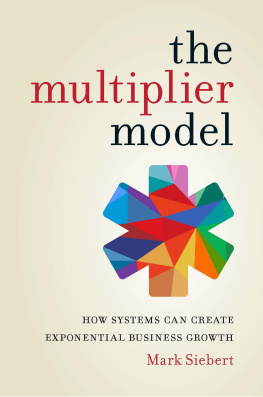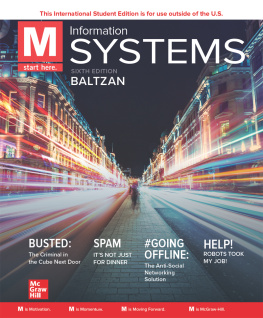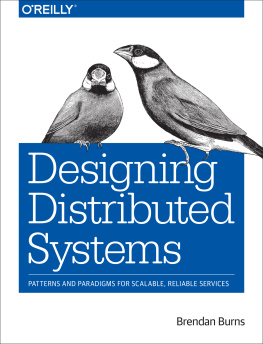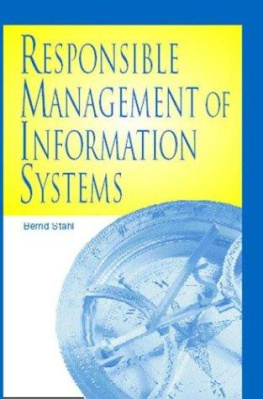Decision Management Systems
A Practical Guide to Using Business Rules and Predictive Analytics
James Taylor

IBM Press
Pearson plc
Upper Saddle River, NJ Boston Indianapolis San Francisco
New York Toronto Montreal London Munich Paris Madrid
Cape Town Sydney Tokyo Singapore Mexico City
ibmpressbooks.com
The authors and publisher have taken care in the preparation of this book, but make no expressed or implied warranty of any kind and assume no responsibility for errors or omissions. No liability is assumed for incidental or consequential damages in connection with or arising out of the use of the information or programs contained herein.
Copyright 2012 by International Business Machines Corporation. All rights reserved.
Note to U.S. Government Users: Documentation related to restricted right. Use, duplication, or disclosure is subject to restrictions set forth in GSA ADP Schedule Contract with IBM Corporation.
IBM Press Program Managers: Steven M. Stansel, Ellice Uffer
Cover design: IBM Corporation
Associate Publisher: Dave Dusthimer
Marketing Manager: Stephane Nakib
Executive Editor: Mary Beth Ray
Senior Development Editor: Kimberley Debus
Managing Editor: Kristy Hart
Designer: Alan Clements
Technical Editors: Claye Greene, Don Griest
Project Editor: Jovana San Nicolas-Shirley
Indexer: Lisa Stumpf
Compositor: Gloria Schurick
Proofreader: Seth Kerney
Manufacturing Buyer: Dan Uhrig
Published by Pearson plc
Publishing as IBM Press
IBM Press offers excellent discounts on this book when ordered in quantity for bulk purchases or special sales, which may include electronic versions and/or custom covers and content particular to your business, training goals, marketing focus, and branding interests. For more information, please contact
U. S. Corporate and Government Sales
1-800-382-3419
.
For sales outside the U. S., please contact
International Sales
.
The following terms are trademarks or registered trademarks of International Business Machines Corporation in the United States, other countries, or both: IBM, the IBM Press logo, SPSS, WebSphere, and ILOG. Netezza is a registered trademark of Netezza Corporation, an IBM Company. Microsoft is a trademark of Microsoft Corporation in the United States, other countries, or both. Other company, product, or service names may be trademarks or service marks of others.
The Library of Congress cataloging-in-publication data is on file.
All rights reserved. This publication is protected by copyright, and permission must be obtained from the publisher prior to any prohibited reproduction, storage in a retrieval system, or transmission in any form or by any means, electronic, mechanical, photocopying, recording, or likewise. For information regarding permissions, write to:
Pearson Education, Inc.
Rights and Contracts Department
501 Boylston Street, Suite 900
Boston, MA 02116
Fax (617) 671-3447
ISBN-13: 978-0-13-288438-9
ISBN-10: 0-13-288438-0
Text printed in the United States on recycled paper at R.R. Donnelley in Crawfordsville, Indiana.
First printing October 2011
For Meri, even though its not poetry
For my parents
And for my boys, again
Foreword by Deepak Advani
Over the last couple of decades, businesses gained a competitive advantage by automating business processes. New companies and ecosystems were born around ERP, SCM, and CRM. We are at a point where automation is no longer a competitive advantage. The next wave of differentiation will come through decision optimization. And at the heart of decision optimization is a smart decision system, a topic that James Taylor does an outstanding job of explaining in this book.
As James explains, a smart decision system encapsulates business rules, predictive models, and optimization. Business rules codify the best practices and human knowledge that a business builds up over time. Predictive models use statistics and mathematical algorithms to recommend the best action at any given time. Optimization, through constraint-based programming or mathematical programming techniques originally applied to operations research, delivers the best outcome. It is the combination of all three disciplines that enables organizations to optimize decisions. What used to be called artificial intelligence became predictive and advanced analytical techniques and are now Decision Management Systems, which are increasingly populating business processes and making adopters competitive.
As James describes in the book, a Decision Management System optimizes decisions not only for knowledge workers, but for all workers. This enables a call center representative to make the best offer to reduce customer churn, a claims processing worker to maximize fraud detection, and a loan officer to reduce risk while maximizing return. And its not just decisions made by peoplea Decision Management System can enable your e-commerce site to present the next best offer, traffic control systems to automatically make adjustments to reduce congestion, and so on. Well-designed Decision Management Systems keep track of decisions taken and outcomes achieved, then have the ability to make or recommend automatic mid-course corrections to improve outcomes over time. Decision Management Systems provide competitive differentiation through every critical business processes, at each decision point, leading to optimized outcomes.
Im convinced that Decision Management Systems have the ability to deliver significant competitive advantage to businesses, governments and institutions. James does a thorough job of explaining the business value and the design elements of Decision Management Systems that are the enablers of a formidable business transformation.
Deepak Advani
Vice President, Business Analytics Products & SPSS, IBM
Foreword by Pierre Haren
In the past 30 years, the evolution of computer science can be described as a constant effort to reify, a long march to transform all activities into digital things. We started with the structuring of data and the advent of relational database systems, which led to the ascension of Oracle; then with the reification of processes, with the Enterprise Resource Planning software wave leading to the emergence of SAP, and later of I2 for Supply Chain Management and Siebel Systems for Customer Relationship Management.
We moved on to the Business Process Management wave, which now enables the description of most service activities into well-defined sequences of processes weaving human-based processes with computer-based processes. This BPM emergence sets the stage for the next reification wave: that of decisions.
And this is what this book by James Taylor is about: how we can transform the fleeting process of decisions into digital things that we can describe, store, evaluate, compare, automate, and modify at the speed required by modern business.
The rate of change of everything is the global variable, that has changed most over the last 30 years. Relational databases postulated the value of slow-changing table structures. Enterprise Resource Planning systems embedded best-of-breed processes into rather inflexible software architectures. However, nowadays, most decisions live in a very fast-changing environment due to new regulations, frequent catastrophic events, business model changes, and intensely competitive landscapes. This book describes how these decisions can be extracted, represented, and manipulated automatically in an AAA-rated environment: Agile, Analytic, and Adaptive.
















